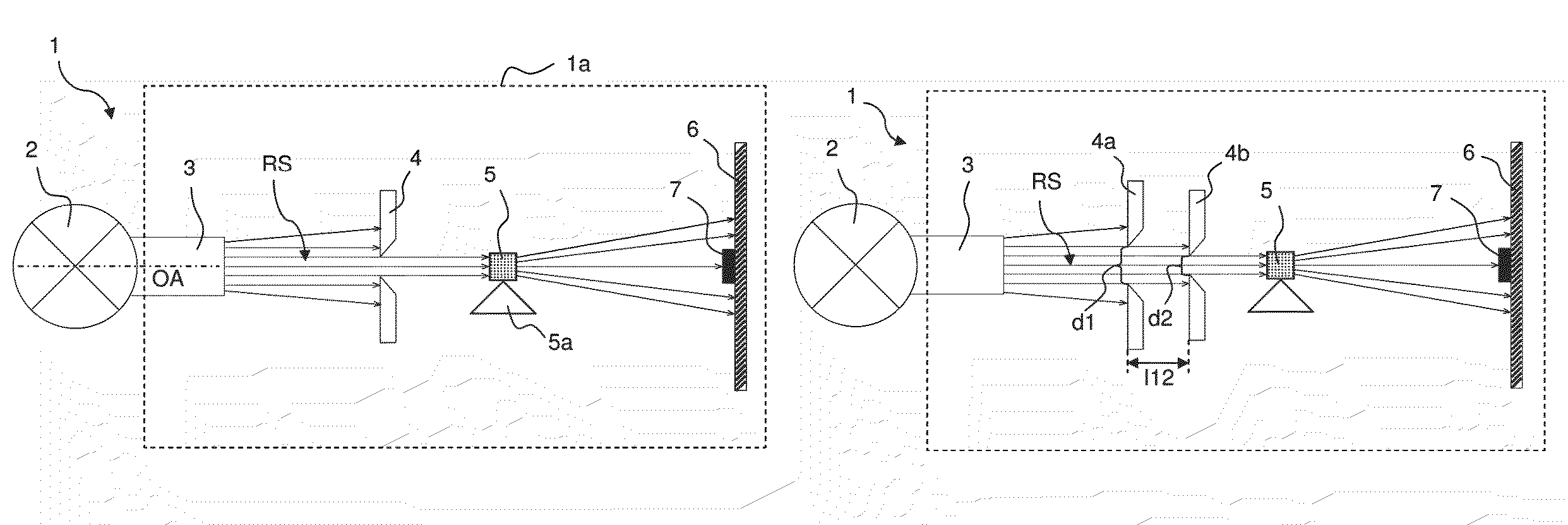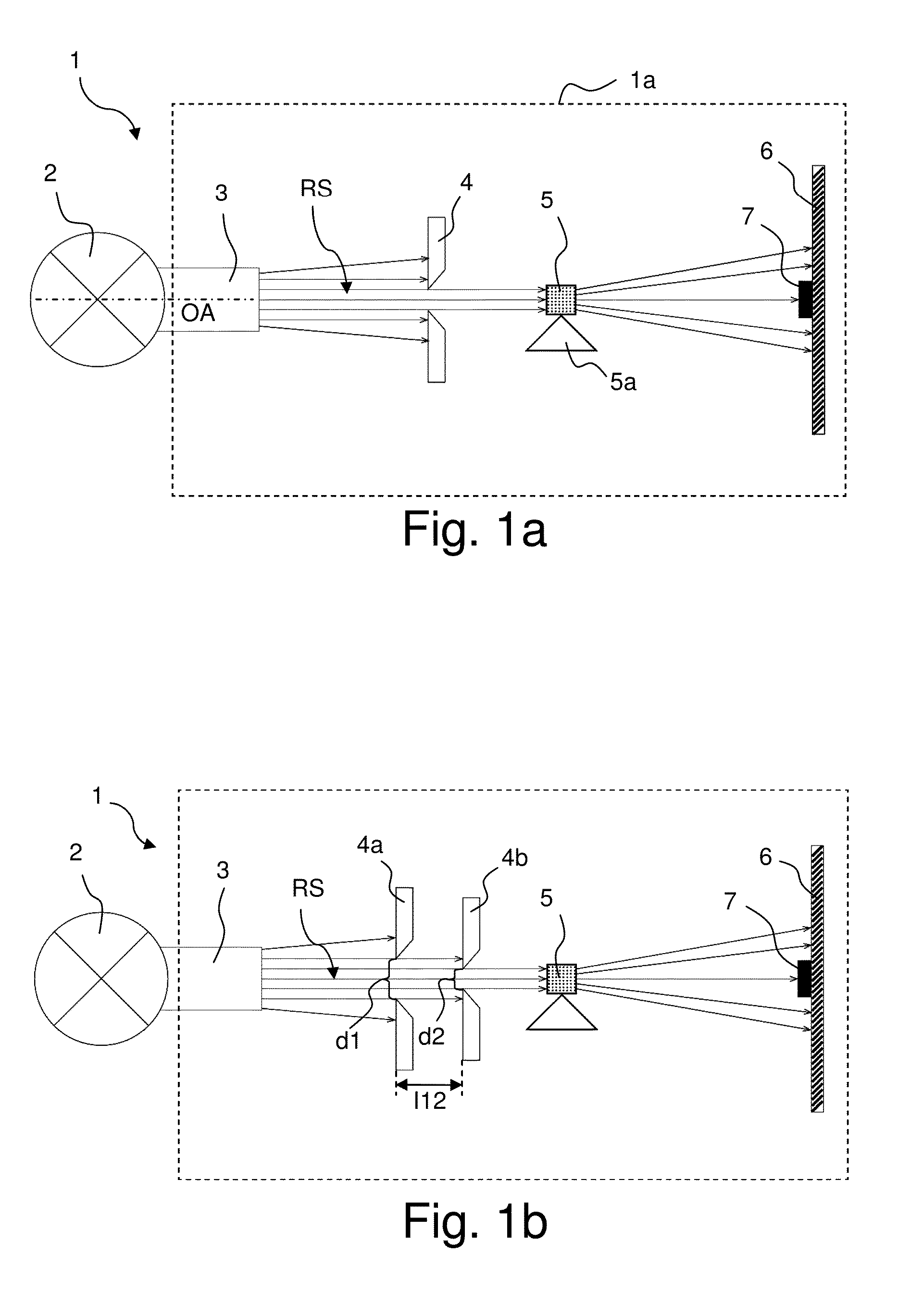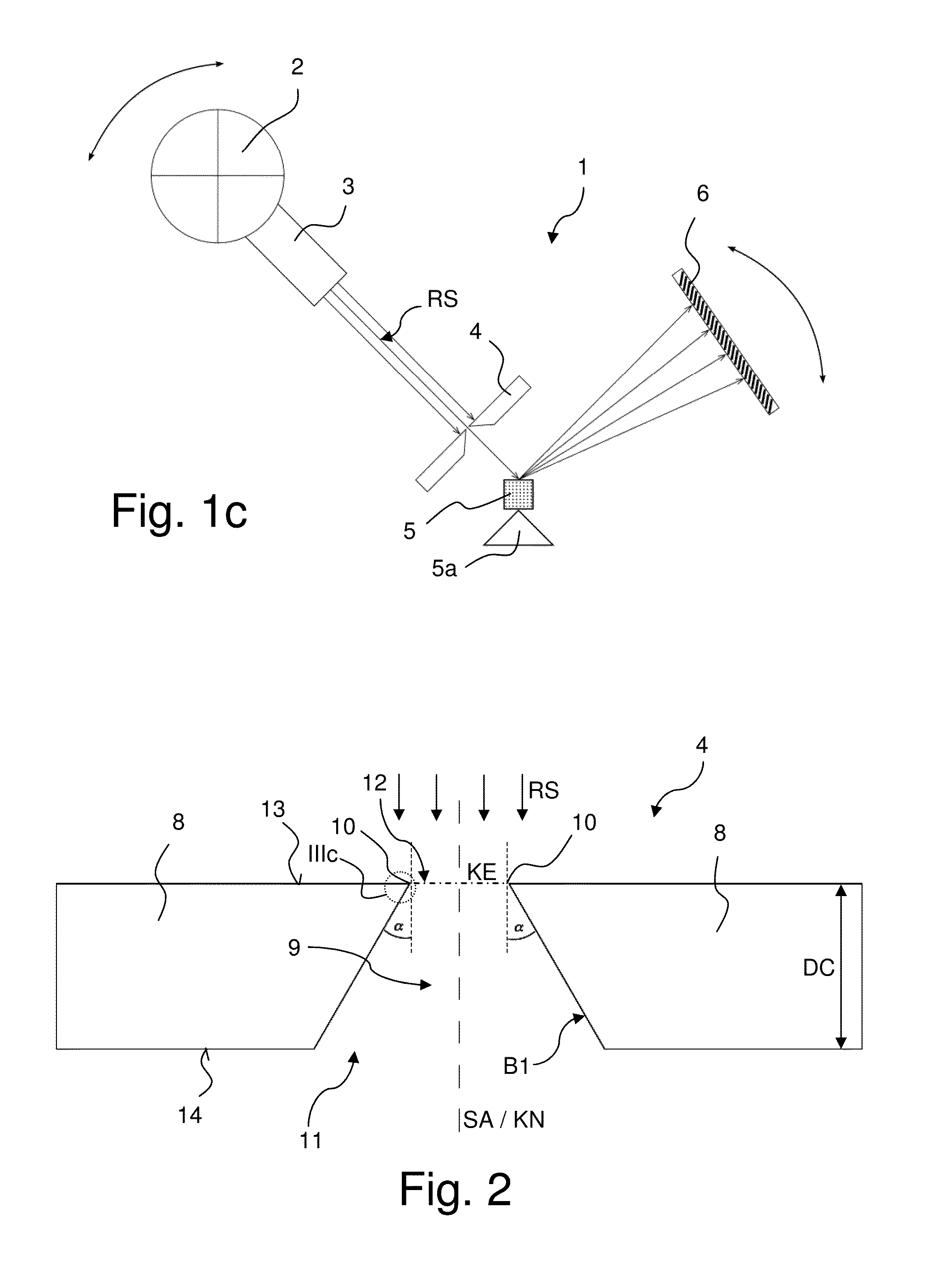X-ray analysis apparatus with single crystal X-ray aperture and method for manufacturing a single crystal X-ray aperture
a technology of x-ray analysis apparatus and single crystal, which is applied in the direction of radiation diagnostic diaphragms, instruments, applications, etc., can solve the problems of reducing the resolution or even impairment of the correct counting behavior of the detector, the deterioration of the signal-to-noise ratio, and the accompanying significantly longer measurement times, so as to prevent the soiling of the edge, reduce the time required for step, and prevent the effect of unnecessary increase in parasitic scattering
- Summary
- Abstract
- Description
- Claims
- Application Information
AI Technical Summary
Benefits of technology
Problems solved by technology
Method used
Image
Examples
first embodiment
[0118]FIG. 1a shows a schematic view of an inventive X-ray analysis apparatus 1. The X-ray analysis apparatus 1 can e.g. be used for a SAXS or SCD measurement.
[0119]The X-ray analysis apparatus 1 comprises an X-ray source 2, e.g. an X-ray tube, in the simplest case with a fixed anode. An X-ray beam RS emitted by the X-ray source 1 is reshaped by a beam-shaping element 3 (in the present case approximately parallelized by a Goebel or Montel mirror) and directed to an X-ray aperture 4. In the illustrated embodiment, the beam-shaping element 3 is directly mounted to the X-ray source 2 and the X-ray aperture 4 is disposed at a distance from the beam-shaping element 3.
[0120]The X-ray aperture 4 has a single crystal aperture body (in this connection see below, e.g. FIG. 2) and widens like a funnel in the propagation direction of the X-ray beam RS (in FIG. 1 from the left-hand side to the right-hand side, cf. optical axis OA). The X-ray aperture 4 blocks an outer part of the X-ray beam RS, ...
second embodiment
[0123]FIG. 1b shows an inventive X-ray analysis apparatus 1 which largely corresponds to the embodiment of FIG. 1a. For this reason, only the substantial differences are described below.
[0124]The X-ray analysis apparatus 1 has two X-ray apertures 4a, 4b with single crystal aperture body (see below), each of which widens like a funnel in the beam propagation direction. The X-ray apertures 4a, 4b each block an outer part of the X-ray beam RS, wherein no or only very little parasitic scattered radiation is generated.
[0125]The X-ray apertures 4a, 4b are arranged between the X-ray source 2 and the sample 5. Both X-ray apertures 4a, 4b are arranged at a separation from the sample 5. In SAXS measuring arrangements, the aperture diameters d1, d2 and the aperture separation l12 are selected in correspondence with the required divergence and the beam cross-section of the respective measuring arrangement (it should be noted that the aperture diameters d1, d2 of the X-ray apertures 4a, 4b can b...
third embodiment
[0126]FIG. 1c schematically shows a top view of an inventive X-ray analysis apparatus 1, which is particularly suited as a μ-XRD measuring arrangement. Also in this case, only the essential differences with respect to the embodiment of FIG. 1a are explained.
[0127]In this case, the X-ray source 2 can be rotated, together with the beam-shaping element 3 and the X-ray aperture 4 with single crystal aperture body, relative to the sample 5 on the sample holder 5a, wherein the associated axis of rotation extends perpendicularly to the plane of the drawing of FIG. 1c. The detector 6 can also be rotated about the same axis of rotation (goniometer structure). Since the X-ray aperture 4 with single crystal aperture body is used, it is possible to work with large aperture diameters or high photon fluxes, at the same time strictly delimiting the X-ray beam RS to the sample 5 or to a small area or a small volume of the sample 5.
[0128]FIG. 2 shows a cross-sectional view of an X-ray aperture 4 (wh...
PUM
| Property | Measurement | Unit |
|---|---|---|
| wavelength | aaaaa | aaaaa |
| wavelength | aaaaa | aaaaa |
| wavelength | aaaaa | aaaaa |
Abstract
Description
Claims
Application Information
 Login to View More
Login to View More - R&D
- Intellectual Property
- Life Sciences
- Materials
- Tech Scout
- Unparalleled Data Quality
- Higher Quality Content
- 60% Fewer Hallucinations
Browse by: Latest US Patents, China's latest patents, Technical Efficacy Thesaurus, Application Domain, Technology Topic, Popular Technical Reports.
© 2025 PatSnap. All rights reserved.Legal|Privacy policy|Modern Slavery Act Transparency Statement|Sitemap|About US| Contact US: help@patsnap.com



